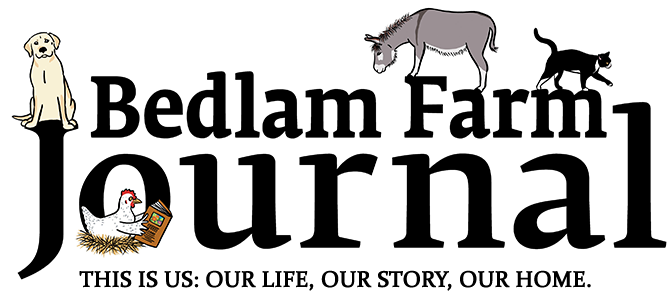
Sunday, I read the reviews of “Inside Out,” the new Disney/Pixar animated film from Pete Docer and Ronaldo Del Carmen. I hadn’t heard too much about it, but I was excited to read that it is the best reviewed movie of the year, it got a 93 Metascore from 44 film critics on IMDB (International Movie Data Base.)That is off the charts.
I told Maria we had to see a movie that critics loved this much: “In execution, Pixar’s 15th feature proves to be the greatest idea the toon studio has ever had: a stunningly original concept that will not only delight and entertain the company’s massive worldwide audience, but also promises to forever change the way people think, delivering creative fireworks grounded by a wonderfully relatable family story.”
How can you not rush off to see a movie like that? There were a lot more reviews like it.
The story line has young Riley uprooted from her home in Minneapolis and moved to San Francisco, which proves both a shock and a disappointment to her, as a new city probably would to a happy young transplant. Moving is hard, it is especially hard on kids.
Riley’s parents, both loving Boomers, called her their “happy child,” they really want her to keep her chin up for them, and this puts a lot of pressure on her at a difficult time. The Boomer experience is about solving problems for kids, not leaving them alone to figure them out. Riley, a happy and social athlete in Minnesota, doesn’t have a chance to work out her emotions, or even to have any.
But therein the plot twist: In this movie, her emotions – Joy, Fear, Anger, Disgust and Sadness – are adorable animated figures and battle furiously and continuously about how best to deal with her life in a new city, house and school. Her emotions, led by Joy, are the real stars of the movie. Unfortunately, they are dizzy, inept, and prone to hysteria. I was dizzy pretty soon myself.
Pixar’s brilliant animation is a given, I confess to taking it for granted some times. It is wonderful. I have to say the movie did not live up to the reviews for me. It seemed a good message – let your kid be unhappy sometimes, it is a necessary part of life – but I mostly felt the same way I did while watching one of those animated films – The Journey Through The Imagination comes to mind – at Disney World’s Epcot.
“Inside Out” was admittedly at a much higher and more substantive level, but it had the feel of a message movie, educational and fast-paced and, well all is said and done, not very surprising. Is it really a groundbreaking idea to suggest the the emotional lives of adolescents are turbulent; that they sometimes need to be sad, and we can’t solve all of their problems?
I know that the cute and fuzzy emotions – the characters – will not only be a ride at Disney World, but will be selling their furry selves in the gift shop when the new “Emotions” ride, already in the planning stage, I am sure, is over. This synergistic marketing is now so familiar a feature of Disney movies that critics don’t even bother to mention it.
The move was not as witty as it should have been, nor as funny as it should have been, or even as dark and challenging as it should have been. They could have poked a lot more fun at San Francisco, the trendy capital of the earth right now. I should have laughed a lot more than I did.
Riley’s parents are nice but quite oblivious and unreal. They define one-dimensional. The directors forget that adults have intense emotions too. I found the idea that some fuzzy and adorable creatures typing away at screens are programming a child’s every word and deed and feeling to be a bit on the creepy side, beyond anything even Edward Snowden has accused the dark side of the government of doing. Who are these little creatures, anyway, and who put the in charge of our consciousness?
According to Doctor, each emotion is based on a shape: Joy is based on a star, Sadness is a teardrop, Anger is a fine brick, Fear is a raw nerve, and Disgust is broccoli. I learned this on IMDB, I would not have known it from the movie.
The cartoon emotions all meant well for Riley, but they were dangerously inept at running her life. They seemed to know nothing about emotions, and they all seemed intent on causing permanent mental scarring and a sure fire breakdown for Riley. Together, they suggested schizophrenia more than wisdom and feeling. We are so busy watching them insert feelings into Riley and her life that we lose any sense of what she is really feeling. This is not a nit, at least to me.
Even Riley’s dreams were programmed as the emotions warring strategies collided with one another, and her life and it’s many animated symbols began to disintegrate one by one. Since the emotions all looked like the animated puppets they are, the movie almost approached puppetry to me rather than drama. Riley’s warring emotions (the puppets, that is) got increasingly hysterical as Riley descended into misery and Joy got lost and struggled to find her way back to emotion headquarters, it reminded me at times of Pleasure Island in Pinocchio.
I was surprised to find myself squirming. It seemed to me this was all taking too long, the whole middle of the movie is a chase-and-adventure saga, and a frustrating one. I knew Joy would make it back and wondered why it took so long and got to be so monotonous. There is a lot to like in this movie, and I would sure recommend it to anyone interested in family, emotions, childhood or parenting. But to really enjoy it, I would ratchet your expectations down a bit, it was really a wondrously animated and very solid B movie, at least to me.
You might well have a different response, and that is the wonderful thing about movies. I was out of sync with most of the critics, and it is unusual for me to be so far apart from so many of them. But the movie did not in any way change the way I think about the way people think and I did not share the view that the film very powerfully paid homage to just how turbulent and important the inner life of a child can be.
It felt more to me as if Muppets on speed – Fear got knocked down more times than the Three Stooges – had got their hands on some jazzy technology, in this case a mind control console. They were punching buttons madly for a very long time to make this unsuspecting child jump up and down like a moody doll. Why did she feel like a victim to me? Mostly, I was hoping Riley would get free of her manipulators and get on with the business of adjusting to her new life.
